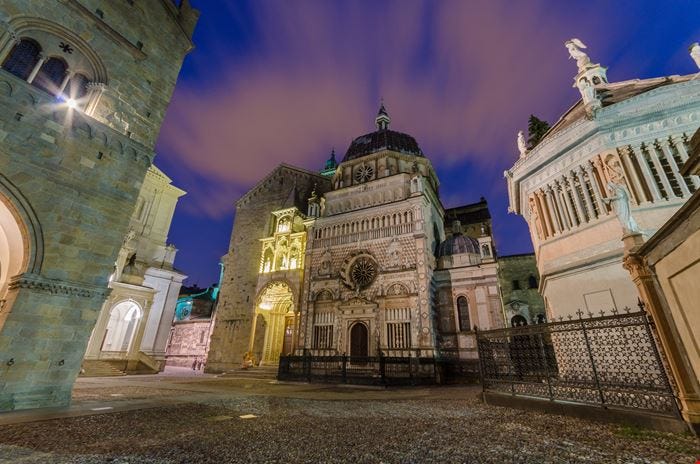The lost art of permanence
Environmentalists want buildings to last longer; for them to be refurbished rather than removed. But are modern buildings built from the right stuff and by the right people?
This time last week, I was in Bergamo in Italy, celebrating 34 years of (mostly) wedded bliss. In addition to eating my bodyweight in pasta and possibly contributing to a localised polenta shortage, I took the opportunity to visit the Duomo di Bergamo.
Dedicated (appropriately) to Saint Alexander of Bergamo, the Duomo (or cathedral) was built in the 15th century. In the six centuries that have since elapsed, it has been invaded, ransacked and partially demolished. It has seen wars and conflicts and endured several earthquakes as well.
But the cathedral has survived. And it survived for several very good reasons.
Firstly, it was built using stone torn from the very landscape upon which it now stands. It was built using timber cut from the surrounding Lombardy forests. And it was built by stonemasons and carpenters; master craftsmen that learned their trade under the tutelage of other master craftsmen.
Using very simple materials, those craftsmen created something ornate, beautiful, unique and long-lasting.
Now compare that to the buildings being erected all around us today.
Now I know what you’re thinking. Buildings of today are not designed to last for hundreds of years. In fact, until relatively recently, a commercial building in London might have an expected life of 40, 30 or even just 25 years. It was built in the knowledge that - possibly in the lifetime of the architect and the builder - it would be torn down to be replaced by something more modern, more suitable, and more in keeping with the times.
However, thanks to concerns over embodied carbon and sustainability, there is now a desire to retain those buildings and to extend their life; to refurbish rather than demolish; to retrofit rather than remove.
And this is precisely where we may have an issue.
While the Duomo di Bergamo was built using the very best materials available at the time, modern buildings are built to a budget using materials that have yet to be tested and proven over millennia.
Moreover, the Duomo was built by Leonardo, Rafaello and Donatello; master craftsmen hand-picked for their skill, experience and craftsmanship. Modern buildings, meanwhile, are built by Wayne, Shane and Dwayne because they are the cheapest. And in place of expertise and experience, they have a piece of plastic gained at a school or college of questionable repute.
The Duomo di Bergamo has stood for 600 years or thereabouts. Alien invasion, zombie apocalypse or a Russian pressing the wrong button notwithstanding, the chances are that it could easily last another 600 years.
For all our good and noble intentions, for all our advanced man-made materials, for all our state-of-the-art construction methodologies, health and safety systems and industry training, the same cannot be said of anything being built today.
So before the refit enthusiasts get too carried away, they might want to consider the quality of that which they’re about to refurbish.






A very valid article yet again, we are perfectly capable of building such things in this day & age, but i fear the cost would be prohibited, nobody would have the stomach to finance it, it would be interesting to come back to earth in a thousand years time just to see what is still standing